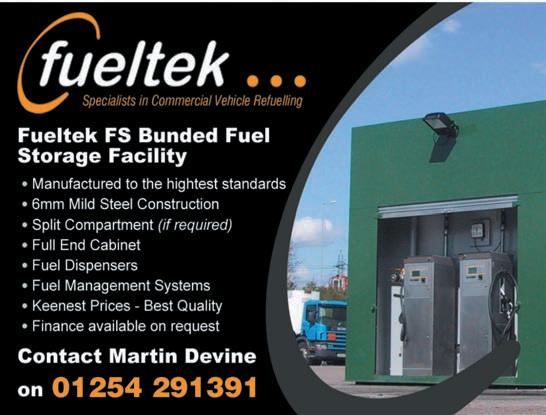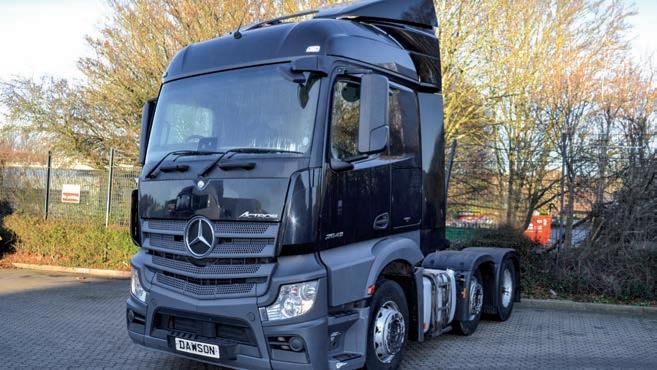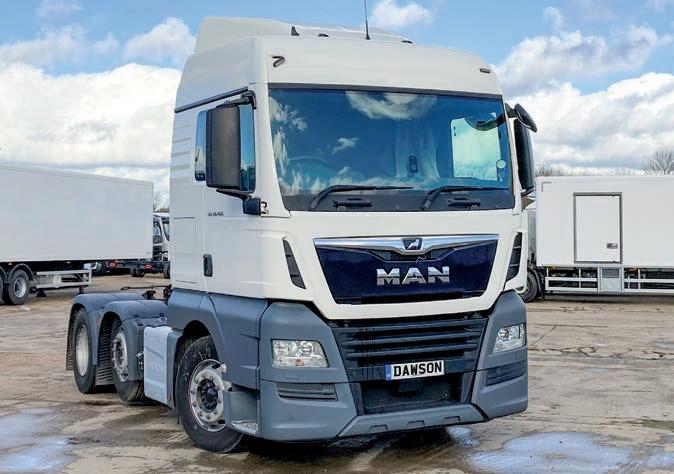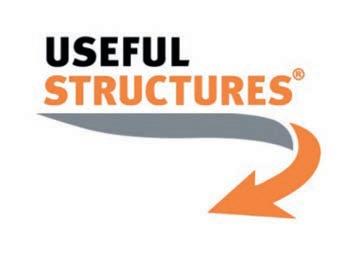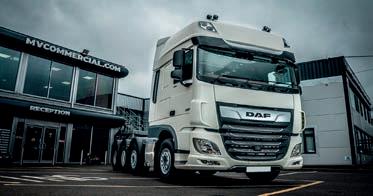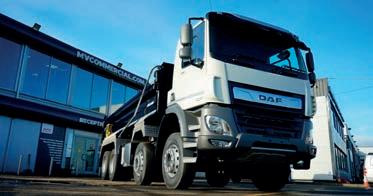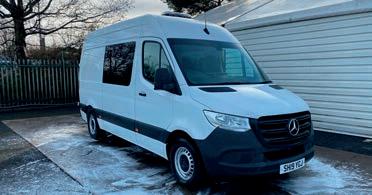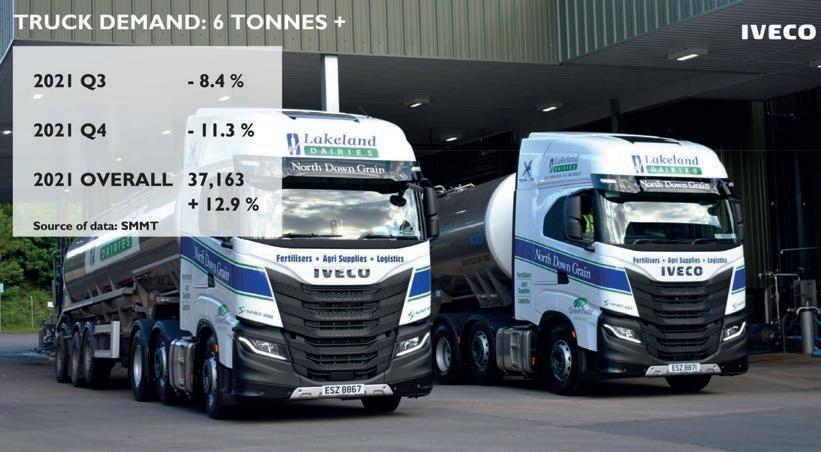
39 minute read
UK truck market picks up
Manufacturer optimistic that boom will continue as market gets ready for alternative fuels
Iveco truck sales surge as recovery gains pace
Advertisement
By Tim Wallace
Iveco shook off the challenges of Covid-19 and component shortages to make 2021 its strongest year in the UK for over a decade.
Speaking at the company’s ‘State of the Nation’ briefing at its Basildon HQ, Gareth Lumsdaine, business line director of truck, said volumes were up, the product range was stronger than ever and it was strengthening its position as a leader in alternative fuels.
Iveco recorded 37,163 registrations above 6 tonnes during 2021, an increase of 12.9%.
While Lumsdaine said this was “better than it might have been, given the scope of the real-world challenges,” he admitted the increase came off a low 2020 baseline. Q2 2020 saw registrations plunging to their lowest quarterly total ever. However, Q3 and Q4 delivered a strong recovery and the market entered 2021 with a positive mindset.
On the up
In the first half of last year, registrations increased by 46.6% – “an incredible number and a reflection of pent-up demand spilling over from 2020,” Lumsdaine said.
But supply chain shortages then began to bite, with Q3 and Q4 demand down on the previous year. However, demand for 6- to 16-tonne trucks rose 4.6%, from 7,332 to 7,671 overall.
“The 7.5-tonner will never again be the force it once was,” Lumsdaine added. “In the late ‘80s demand peaked at about 19,000 units or some 38% of all trucks sold. Today we believe the figure to be five times less than that.”
He also highlighted the growth in the heavy rigid sector – which he dubbed “the workhorse of the country” – where volumes rose by 16.3% to 13,560 units, driven by increased demand for 8-wheelers.
“Tipper bodybuilders say their order books stretch further into the future than at almost any time in the last two or three decades,” he said. “But it’s not just 8-wheelers – the waste and recycling sector is back and busy, and we continue to see a move towards 26-tonners for distribution away from 18-tonners.”
He added that tractors have had a tougher time than most since the start of the pandemic. Volumes here fell by 37% in 2020 but grew by 14.4% in 2021, ahead of the market average.
Lumsdaine also hailed the continued success of the “head turning” S-WAY, as well as the Eurocargo where demand also rose strongly in 2021.
Looking ahead, Iveco is expecting tractor registrations to pick up faster as supply improves while rigids – 8-wheelers in particular – will be slower as the effects of last year’s shortages and lack of body slots at bodybuilders continue to prolong lead times.

New and improved
To tackle these issues, Iveco pledged to maintain communication with its customers and to strengthen its R&M offerings to two years on diesel and three years on all gas products.
It will also bring some new updates to the S-WAY, delivering a reduction in fuel consumption of 3%.
DriverPal has also been introduced to the range featuring Amazon Alexa voice commands to transform the way drivers interact with their vehicle.
Turning to its long-established focus on zero emissions, Iveco stressed that it already has a compelling alternative to diesel in the form of biomethane.
This reduces tailpipe emission by as much as 95% and is already being used by the likes of Ocado, Hermes and Amazon.
“Iveco will continue to develop biomethane as a mainstream alternative to diesel as the marathon towards 2035 and 2040 continues,” explained Jorge Asensio, product manager and alternative propulsions business lead.
However, he said the fuel’s popularity is expected to peak around 2030, so part two of Iveco’s strategy will be battery electric and part three hydrogen fuel cell.
“Let’s not kid ourselves; our industry is one that’s so focused on delivering a good job today, that all too often it leaves things until the last minute,” Asensio concluded.
“Reality says the move to emissions-free transport will be a marathon, followed by a sprint finish, for the vast majority of operators.
“They’ll make the move when the technology is proven, when the infrastructure is available to support it, when there are minimal or no cost penalties for doing so and when they can be sure that it’s reliable, dependable and costeffective.
“The only way to speed this up is for the government to introduce wider incentives for them to do so – something they appear unwilling to consider at the moment.”




More than 90 brands have already signed up to exhibit at RTX. From vehicle manufacturers such as Bradshaw Electric Vehicles, DAF, Iveco, Isuzu Truck (UK), Scania GB, TEVVA and Volvo Trucks, through to trailer firms, bodybuilders and tyre makers. The exhibition will host a vast central indoor and outdoor hub, alongside a series of specialist zones for equipment. Here’s a taster of what’s on offer... n Urban zone, in association with Freight in the City Expo n Tipper zone, in association with Tip-Ex n Tanker zone, in association with Tank-Ex n Trailer zone n Waste and recycling zone n Cranes and materials handling zone n Heavy haulage zone, in association with Heavy Torque n Recovery zone, in association with On Scene n Convoy in the Park and truck racing zone n Used trucks and auction zone.


Let’s get this show on the road!
As the debut Road Transport Expo show fast approaches, it promises to be a must-attend event for road haulage firms, with a number of leading players already signed up
By Hayley Tayler
For those of you heading along to the Road Transport Expo (RTX) this summer, we thought we’d give you a little glimpse into some of the action you can experience at the show.
This brand-new industry show, which takes place from 30 June to 2 July at NAEC Stoneleigh, promises to combine a show-stopping indoor and outdoor exhibition, with a lively, topical conference.
Brought to you by the publisher of Motor Transport, you can be sure that this show remains true to its ‘All about the truck’ motto. From the latest electric, gas and hydrogen technology, through to compliance briefings, panel debates and product demonstrations – you’ll find it all at RTX.
And to top it all, RTX is completely free to attend, so grab your fleet manager and make sure you sign up today for your tickets to THE show of the year at: roadtransportexpo.co.uk
30 JUNE - 2 JULY STONELEIGH PARK I WARWICKSHIRE
REGISTER NOW! IT’S FREE TO ATTEND!
Roadtransportexpo.co.uk

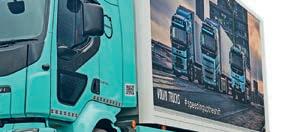
A packed seminar programme that’s guaranteed to deliver
With two seminar stages available, we are putting together an informative programme for visitors from across the road haulage industry. n On our opening day, we have some expert industry speakers lined up to look at key policy and compliance issues affecting HGV fleets. You’ll also be able to find out more about policing and freight crime, alongside crash investigation techniques. n In our Freight in the City sessions, you’ll be able to learn about the latest clean, safe technology aimed at urban distribution. We’ll also help you explore city regulations, such as the latest update to national Clean Air Zones across the UK. And you can hear from leading operators on the innovative ways they are tackling the challenge of last-mile and urban distribution. n The driver shortage, recruitment and apprenticeships, and the role of agency drivers will all be discussed, with top tips to help your business tackle the challenges. n Alternative fuels – both for urban use and technology in the pipeline for long-haul HGVs – will also be a core focus, with leading manufacturers on hand to share their knowledge alongside operator real-life experience of using them.
Top speakers already confirmed, include: n Traffic commissioner for the West of England Kevin Rooney n DVSA chief executive Loveday Ryder n Rod McKenzie, MD of policy and public affairs, RHA n James Firth, head of road freight regulation, Logistics UK n Kieran Smith, CEO, Driver Hire n Mike Dawber, field intelligence officer – Freight Desk, NAVCIS n Catherine Bowen, senior policy advisor, BVRLA n Lesley O’Brien, director, Freightlink Europe – and more to follow
We’ll be publishing the programme soon, but if you have any speaker suggestions, or if you are interested in taking part yourself, email hayley.tayler@roadtransport.com

Response to Logistics Skills Network letter does little to allay concerns about squeeze on tests DVSA ‘clarifies’ strategy over HGV driver testing
In February, we received a response from Loveday Ryder, chief executive officer of the Driver and Vehicle Standards Agency, to a letter Logistics Skills Network wrote to her seeking assurances concerning LGV driver testing capacity in the light of the £34m Skills Bootcamp funding the industry had received from the Department for Education (DfE).
We sought reassurance about the short- and medium-term outlook for test availability. The welcome improvement in practical test numbers in autumn 2021 was largely supported by the use of Defence Delegated Examiners (DDEs) and we wanted to know if the agency was confident that this increased level of testing would be maintained, now that the DDEs have returned to MoD duties.
Ryder wrote in response: “As you are aware, the deployment of DDEs helped increase test throughput over the three months of their deployment. DVSA’s longer-term plans to increase our own skilled and qualified resource continue and we have just commenced a focused training event designed to increase substantially the number of DVSA HGV examiners. Providing they pass their training courses, they should provide even more testing capacity in March/ April onwards.
“We are working with the Ministry of Defence (MoD) and using their facilities and vehicles to train 22 DVSA car examiners to carry out vocational tests.”
We pointed out that the DfE expected 11,000 Skills Bootcamp places to be delivered over the next 11 months. This could require an additional 20,000 practical tests. We wanted to know that the agency’s resourcing plan was sufficiently ambitious to meet this extra demand, as some of our members have reported that they are still experiencing issues with booking theory, practical and Module 4 tests in different parts of the country. Some members do not have enough tests to meet business-as-usual demand before factoring in the additional volumes that the Skills Bootcamps will bring.
Ryder responded: “11,000 candidates generating 20,000 tests would suggest a disappointingly low pass rate. We hope it will be considerably higher than those figures might suggest. DVSA will continue to increase resource to meet our planned demand forecast.
“The changes to the way tests are structured, the greater flexibility over staging, and the stopping of car and trailer testing have all helped increase HGV test throughput. DVSA is delivering 90% more practical HGV tests than prepandemic levels; the volume of tests has increased from around 1,500 per week to around 2,800. As with any operational delivery on this scale there are some challenges and DVSA does need more examiner resource in some areas; the north-west is one of those. We are training additional HGV examiners to address this and will continue to recruit additional staff where we need to.”
However, data published by the DVSA indicates that just 7,603 practical tests were delivered in January 2022, which would equate to no more than 1,800 tests per week – which is a gulf away from 2,800. This requires some further explanation by the DVSA.
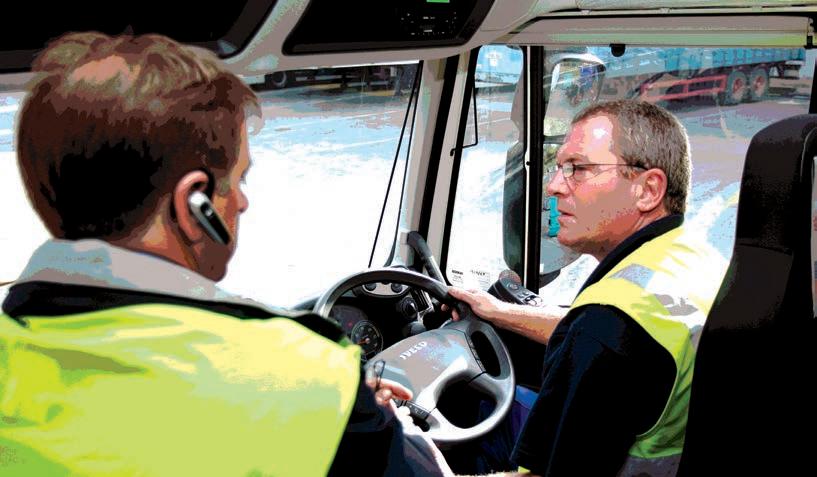

Examiner numbers
Finally, we said that while the agency was actively recruiting and training new examiners, our experience on the ground suggested that more examiners were leaving than joining. The inescapable truth is that the £1tn logistics sector is wholly reliant on around 100 active examiners (who are paid less than the national average full-time salary) to qualify the drivers it needs to keep the economy moving.
In response, Ryder wrote: “Your points about recruitment and retention are reasonable although the FTE count is not correct. DVSA deploys circa in excess of 148 FTE vocational examiners. Recruiting in a time of increasing demand, coupled with increased remuneration in the private sector, is always a challenge. We have just embarked on a very large internal crossskilling exercise to make sure we have additional flexibility and will continue to do so as training capacity allows.
“Likewise we are recruiting externally and have had some success, although our approach is to train them as car examiners initially, and so there is a significant lead time into them becoming operational. I can assure you that we continue to monitor pay rates in the market, attrition levels and our workforce plan, and work with the Department for Transport on an appropriate pay strategy, within the constraints of the civil service framework.”
David Coombes Chair, Logistics Skills Network
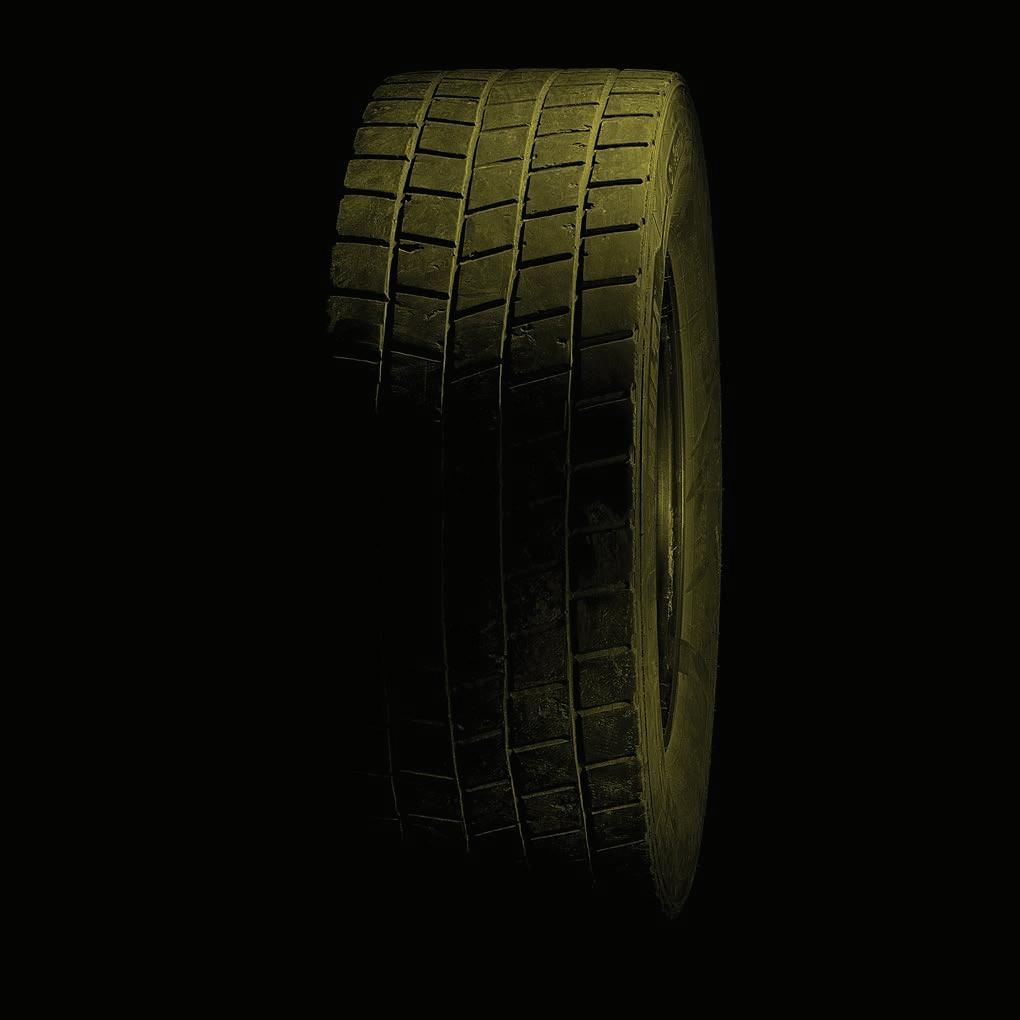
Viewpoint Challenging times ahead
Steve Hobson Editor Motor Transport
Consolidation has been the name of the game among UK 3PLs for many years, but the £1bn takeover of Clipper Logistics by GXO only a few months after GXO was itself created as a spin-off from XPO is a big move.
It comes after Culina’s insatiable appetite for acquisitions led to it buying out Eddie Stobart Logistics and the top end of the 2022 MT Top 100 will look very different when it is put together later this year.
Culina will double in size to £1.6bn per year, taking it from 11th place to 5th in the Top 100, while GXO will leapfrog Wincanton into 4th place with annual turnover of £1.7bn. This is nothing particularly new – DHL Supply Chain acquired much of its £4.5bn annual revenue with a series of takeovers and FedEx grew in the UK with its acquisition of TNT – but the pace of consolidation is now breathtaking.
Kinaxia and EV Cargo didn’t feature at all in 2017, while Kuehne+Nagel – which ranked 7th that year – will disappear from the 2022 table after selling its UK contract logistics business to XPO.
While the changes among 3PLs and hauliers have been dramatic, it is nothing compared with the upheaval in the contract hire and leasing sector, where Ryder’s impending departure, following the demise of three other firms, will leave only a handful of sizeable players in the market.
The pace of these seismic shifts in the road transport and logistics sector is not going to slow. While Brexit, Covid-19, driver shortages and now the invasion of Ukraine have badly affected many operators, the scale of the challenge posed by the government’s zero emissions strategy is going to dwarf them. After 130 years of development, in less than 20 years the whole industry has to wean itself off diesel and adopt new ways of working that haven’t been invented yet. Change brings opportunity as well as threat, but operators and investors will need brave hearts and deep pockets.
Reap the benefits both genders bring
Liz Cliff Distribution supervisor, Air Products
People are often surprised when I tell them I work in the haulage sector and supervise a team of 19 male drivers. Undeniably, there are thousands of excellent male drivers, supervisors and wider experts in our sector who have been instrumental in getting critical supplies where they need to be and advancing areas such as health and safety and technology – and full credit to them. But as people around the world celebrate International Women’s Day tomorrow, it seems pertinent to ask whether a lack of women in the haulage industry is exacerbating some already difficult issues.
We all know there’s a shortfall of some 100,000 HGV drivers. Compare that to the fact that less than 3% of current truck drivers are female. By attracting more women into the sector, we could go some way to fixing the skills shortage.
I’m not a truck driver but I still think more representation of women in the haulage sector in general could help to attract a greater tranche of female drivers.
Women want to work for organisations and sectors where they can see people like themselves thriving at all levels. But it is easy as a woman (or any under-represented group) to look at an industry dominated by men and think that attitudes towards women may be poor.
I think it will reassure women to see that a team of male drivers has been receptive to someone like me as their supervisor. That’s been helped by the fact that I haven’t just dealt with drivers remotely from the office, I’ve got out there on the road, undertaken training with them, and proven that not only do I really understand the work they do and their vehicles, but I’m also fully committed to ensuring their safety and well-being comes first.
Personal well-being matters in every sector and especially when we are looking to attract and retain talent. And for me, better gender balance in the haulage sector could not only help tackle skills shortages, it could also have a really positive impact on mental health. Better balance of gender, culture and background in the workplace can help us all feel more willing to talk openly about how we are feeling and the challenges we face.
I love what I do, and I love the haulage sector. It’s full of variety, character and opportunity, and that’s a winning combination, regardless of whether you’re male or female. I hope that, in future, the sector can reap the benefits that both men and women can bring.
Got something to say?
The newspaper for transport operators
To contact us: Tel: 020 8912 +4 digits or email: name.surname@roadtransport.com
Editor Head of content Steve Hobson 2161 Tim Wallace2158
Events and projects editor
Hayley Pink 2165 Group production manager Isabel Burton Layout & copy editor Nick Shepherd Senior display sales executive Barnaby Goodman-Smith 2128 Event sales Tim George 0755 7677758 Classified and recruitment advertising rtmclassified@roadtransport.com
Sales director Emma Rowland 07780 604075
Divisional director MT Awards Managing director Vic Bunby 2121 Katy Matthews 2152 Andy Salter 2171
Editorial office Road Transport Media, First Floor, Chancery House, St Nicholas Way, Sutton, Surrey SM1 1JB 020 8912 2170
Free copies MT is available free to specified licensed operators under the publisher’s terms of control. For details, email mtsccqueries@roadtransport.com, or call 01772 426705
Subscriptions
Email:customercare@dvvsubs.com Quadrant Subscription Services, Rockwood House, Perrymount Road, Haywards Heath, West Sussex RH16 3DH
Rates UK £146/year.Cheques made payable to Motor Transport. Apply online at mtssubs.com
Registered at the Post Office as a newspaper
Published by
DVV Media International Ltd ©2022 DVV Media International Ltd
ISSN 0027-206 X

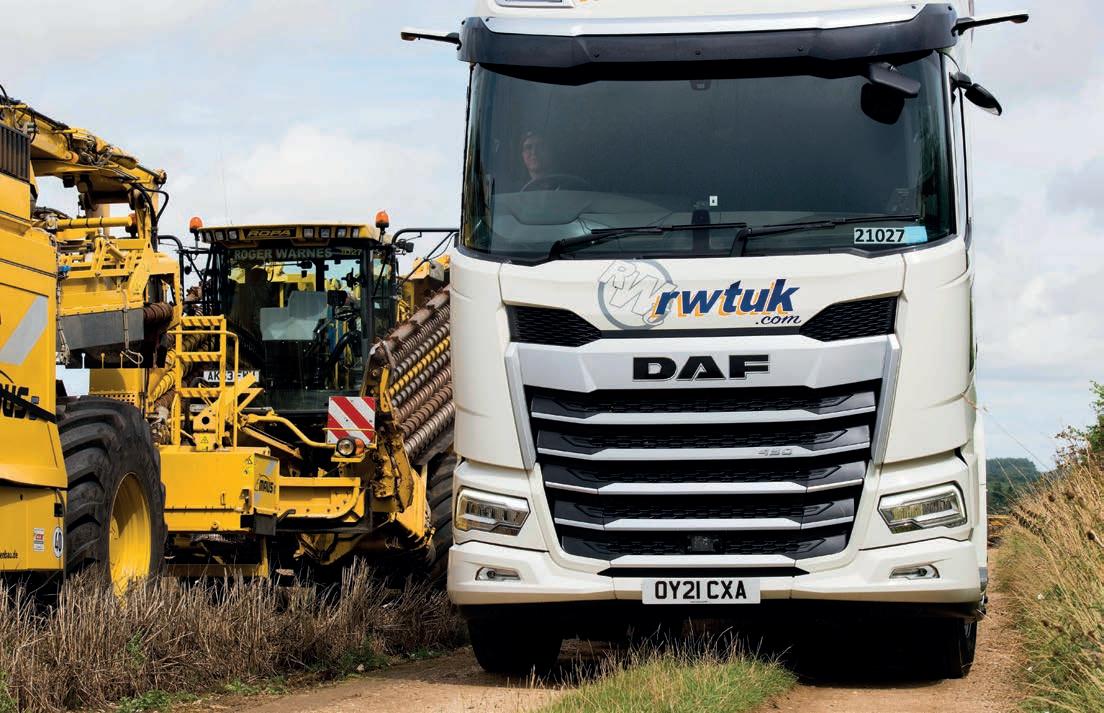
Bulk of problems can be forgotten
There’s a boom in the agricultural and construction sectors, and the post-pandemic world has brought more sensible rates to the market. Sounds like good news all round for bulk hauliers. John Kendall discovers if the optimism is reflected out on the road
In ation at a 30-year high, an economy damaged by the e ects of the coronavirus pandemic and Brexit, including more bureaucracy for those importing and exporting goods to and from the EU, and shortages of driver and vehicles. Overall, it’s not an inspiring picture for bulk hauliers at the start of 2022. 1 January 2022 marked the end of the UK Transition Period for leaving the EU, bringing new rules for the import and export of goods. For hauliers, it means that border controls are now in place. We are not going to work through the new regulations here, but importing and exporting hauliers will already be familiar with the Goods Vehicle Movement Service (GVMS), which came into operation in January and is used for many import and export operations.
“GVMS actually links the documents that have been completed for the consignments to the vehicle number or the trailer number that carries these consignments,” says Sarah Louardi, Logistics UK’s head of international policy. “That requires co-ordination in the supply chain because it’s usually not the same entity that runs the transport operation and operates the truck.” Louardi reports that, perhaps inevitably, there were errors, but GVMS has worked quite well for Logistics UK members.
Of course, there are many other issues affecting bulk haulage operators than regulations. For those involved in agricultural work, it looks as though this could be a good time to be in grain haulage, with Defra reporting that the 2021 UK oat crop was the largest since 1972 and at a total of 1.12 million tonnes, 92,000 tonnes greater than in 2020. The Agriculture and Horticulture Development Board (AHDB) reckons that oat stocks are the largest in its electronic records going back to 1999/2000. While AHDB has seen a reduction in demand for oat consumption in the home market, the bumper crop is expected to put pressure on oat exports to balance reducing domestic demand with high stocks. ➜ 16
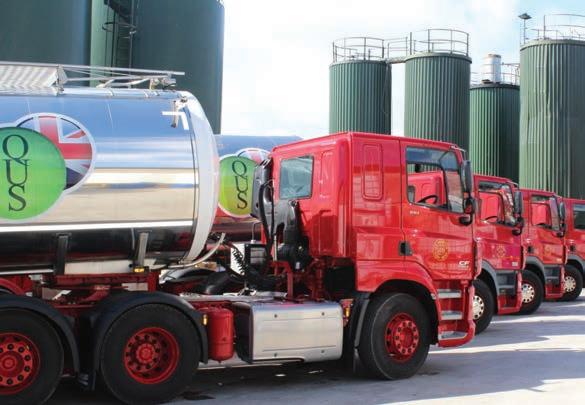



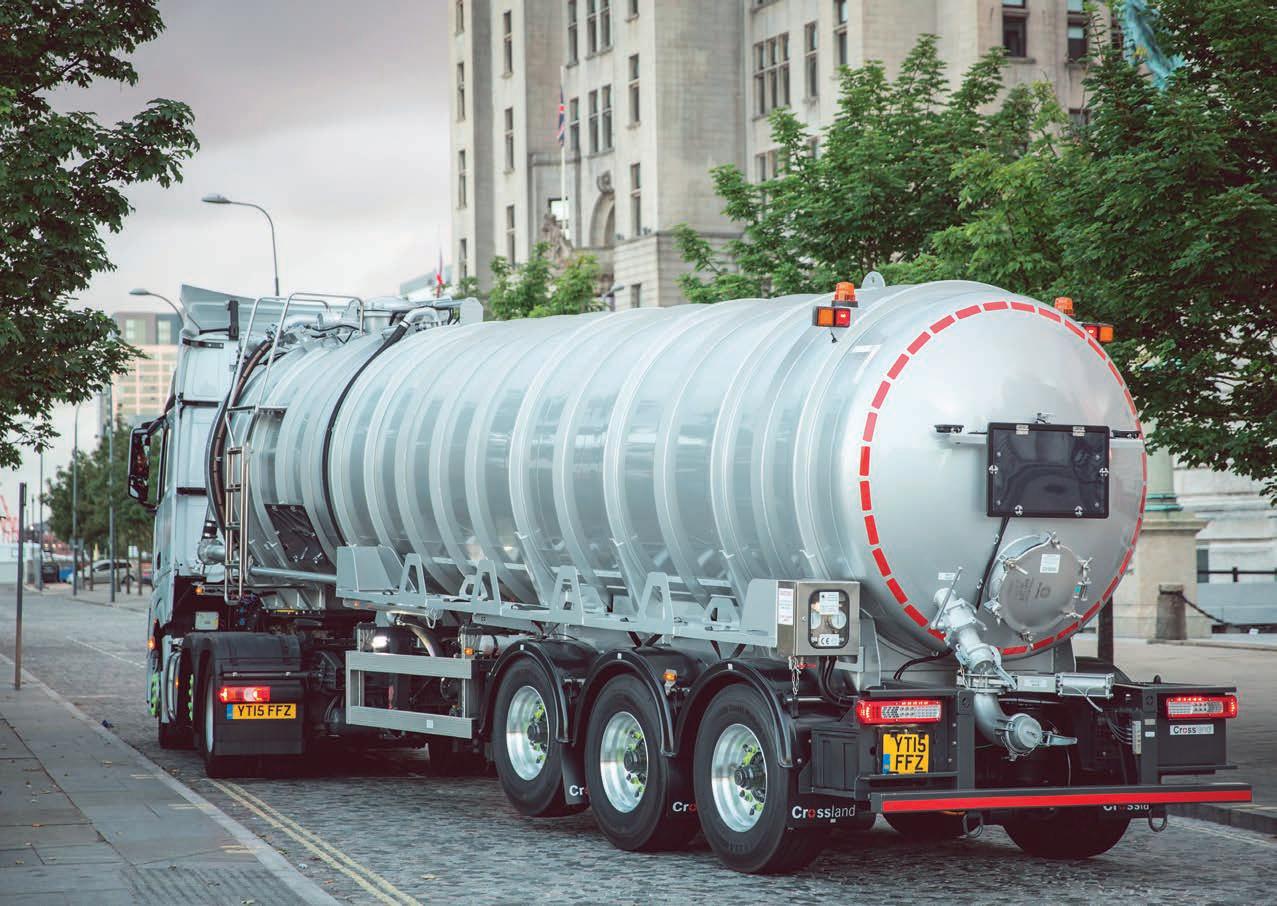
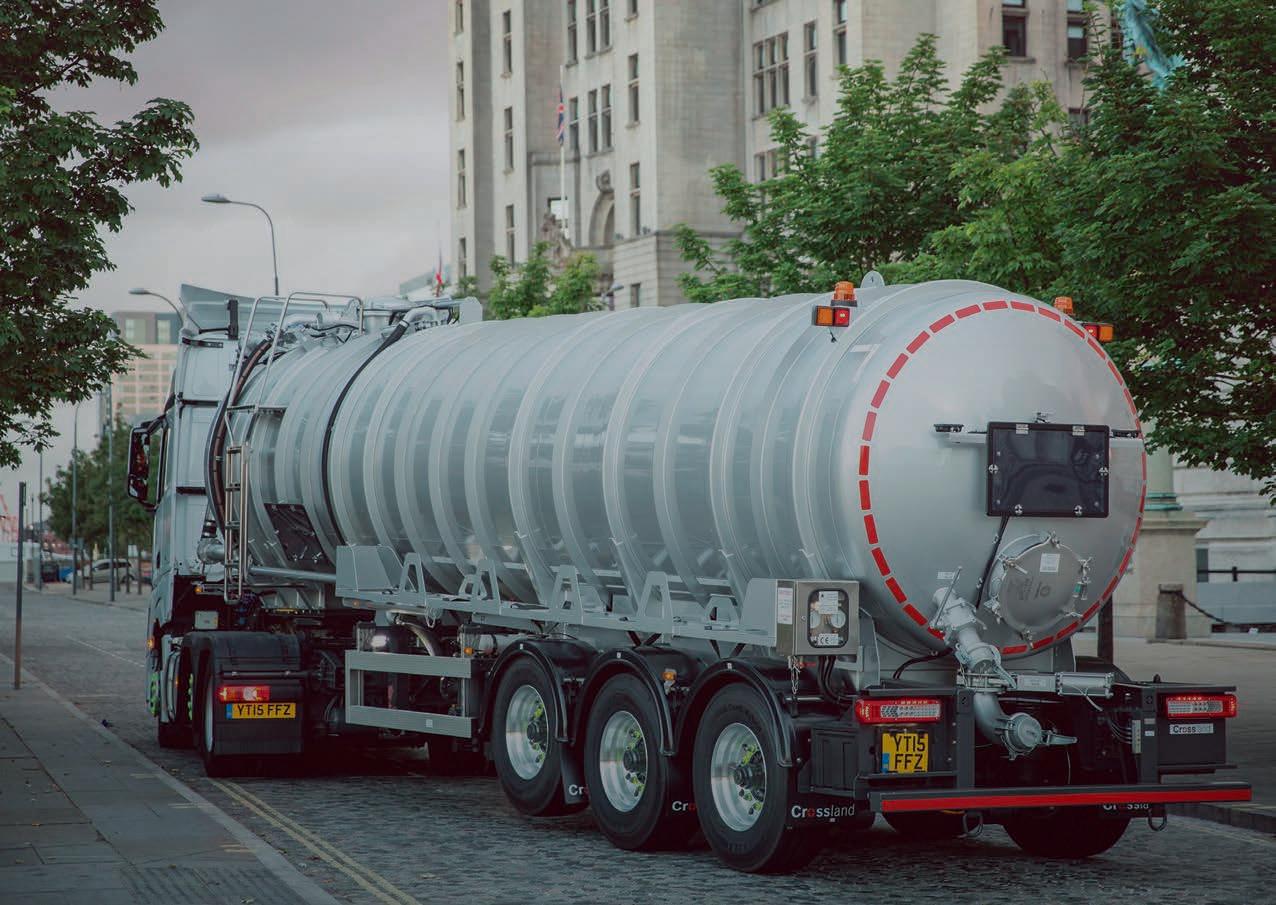
Norfolk bulk haulier Roger Warnes Transport has seen revenues return to pre-Covid levels, and operations director Ian Barclay, pictured right, says clients have been generally accepting of higher rates

The construction sector is also looking buoyant. ONS data for 2021 shows that annual construction output increased by a record 12.7% in 2021 compared with 2020, although output in 2020 was 14.9% down on 2019, mainly resulting from the pandemic. The trend in Q4 2021 was encouraging too with total new construction orders up by 9.2% compared with Q3.
The ONS suggests that total new orders are at their highest level since Q3 2017. Prices are rising too, with construction output prices up 6.2% in 2021, driven by new housing price growth, the strongest since records began in 2014. Construction output for December 2021 grew by 2% compared with November 2021. This is the second consecutive month of growth and the largest growth for a single month since March 2021.
Residual values of used trucks are stubbornly high, which is a positive for firms that have had to hang on to vehicles longer than usual
Hard yards
Are these encouraging trends being matched by hauliers’ experiences on the ground?
“Revenue is up 23% year-on-year, which puts it back to pre-Covid-19 levels. The 2020 reduction was mainly caused by the severe first lockdown, which reduced construction activity massively,” says Ian Barclay, operations director at Norfolk bulk haulier Roger Warnes Transport. “The financial outcome of 2020 was satisfactory, but it was supported by comparatively low fuel prices and stable human resource costs. An explosion at the port of Tilbury caused extensive damage to a grain silo, which added to the problems that we faced in 2020.
“Vehicle supply ceased, causing us to retain vehicles that would have been disposed of in line with our normal renewal plan, with the consequential increase in maintenance costs. The supply has now resumed to normal levels for the immediate future and we’re enjoying better RVs than we’ve experienced in a long time, which compensates for the additional maintenance costs.”
Barclay reports that rates increased during 2021 to more realistic levels, “some by as much as 20% with customers prepared to assist due to the well-publicised driver shortage and associated wage increases, although contracted customers are resisting attempts to increase rates outside of the scope, which will need to be addressed in 2022”.
The 2020 lockdown increased empty running as quarries closed and Barclay warns that rates are still trailing behind continual cost increases. “A small example is AdBlue which has almost doubled in pence per litre in the last two months,” he says.
Roger Warnes saw a significant increase in animal feed requirements in 2021, “possibly influenced by the lack of slaughtermen who, like EU drivers, appear to have gone home”, observes Barclay.
Driver turnover is an ongoing feature, he says, reporting that many drivers are choosing to either retire early or reduce their working hours. With pay rates having increased by 20% plus incentives, it means that drivers could maintain their earnings with fewer working hours. Another factor was the lack of new drivers, as testing was suspended in 2020 and 2021. “Testing has now resumed and we’re fortunate to have a pipeline of enthusiastic, young and newly qualified drivers,” says Barclay.
The increase in construction work appears to have filtered through to Roger Warnes, with construction related work 72% higher, but that was up from an almost dead stop the previous year. ➜ 18









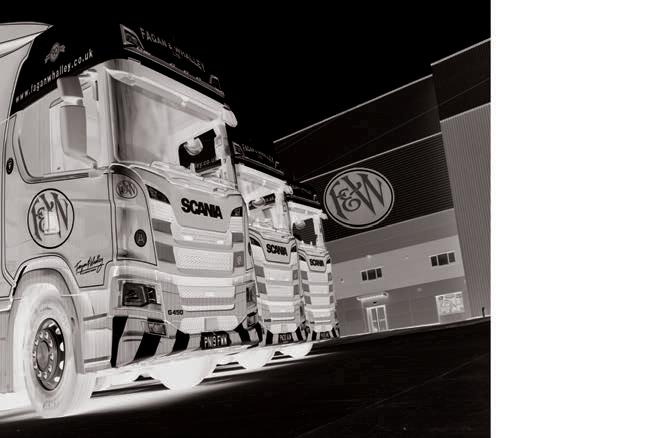
Fagan & Whalley joint CEO Graham Fagan is cheered by an easing of the driver supply issue – but says new vehicles are still scarce Cautiously optimistic probably best describes how Fagan & Whalley joint CEO Graham Fagan is approaching 2022. “I expect construction to return to normal by spring time March/April this year”, he tells MT. “It seems from February that the latest Covid outbreak is easing and things are returning to some kind of normality. The inner-city construction work will continue to be very busy this year.”
He also expects that work on high-speed rail link HS2 should be back following the project timescale in the early part of this year. “HS2 should not be a problem volume-wise and at the moment it is easily dealt with later on in the year,” Fagan predicts. “As it gains momentum it could be a problem, but with careful management, the volumes should be achievable.”
Fagan is not as upbeat as Barclay where the supply of new vehicles and trailers is concerned though. “The component shortage is affecting all sectors at the moment,” he says. “In the buying of vehicles and trailers, we now have longer lead times for new equipment, such as 12 months on tractor units and trailers. As for spare parts, we don’t seem to be experiencing any issues, but I could see it being a problem for specialist engineering parts.”
Driver supply, particularly towards the end of 2021, along with the Covid restrictions and related challenges posed a problem for Fagan & Whalley, but Fagan reports a change in the new year: “The start of 2022 seems easier and the industry is having to adjust to longer-term issues, such as making the sector more attractive to younger people.”
The Cullimore Group has had many years’ involvement in the bulk distribution sector. Group MD Moreton Cullimore has extensive experience in the business and also became the youngest chairman of the Road Haulage Association last year.
In his experience, the construction sector has been relatively normal since around September 2020, with busy periods in both summer 2020 and summer 2021. Where Covid-19 is concerned, he feels that the industry has already gained the experience needed to manage its effects. “I don’t think Omicron has been any more complicated than any other variant of Covid – in fact people seem to be recovering from it more quickly – and we have spent enough time with this disease now to have the procedures in place.
“Of course, in an industry where we are experiencing shortages of both drivers and mechanics, it adds pressure where there was already pressure, which means delays and additional expenses and frustrations, but it’s almost a normal problem now – although I hope it doesn’t last forever.”
The Cullimore Group is not involved in HS2, but Cullimore thinks that there could be knock-on benefits for the company from it. “The only impact for us is that it will absorb the time and concentration of the multinational companies that serve it and hopefully create gaps in our local markets which we may be able to win”, he says.
The company’s experience with component shortages and the effect they are having seems to be in line with that at Fagan & Whalley. “The component shortage is affecting everything it seems,” says Cullimore. “I can’t get a truck in 2022 – ridiculous, and they are already quoting lead times into 2023. But manufacturers have been known to hype the situation before. Even so, for a reactive independent small regional business like ours, it is a very big problem, with no vehicle available at short notice and therefore what’s in the second-hand market becomes very expensive.”
Cullimore also thinks that the driver shortage is something that the industry needs to focus its attention on. “The driver shortage issue is not a new one, but one exacerbated by Covid,” he argues. “It has been a very real problem faced by all in the last 12 months, with still much work to do.
“There are jobs available, but a lack of people to do them. We need to look at improving conditions and cultures for the drivers out there on our UK roads and improve retention of today’s drivers for tomorrow.” n
THE BODYBUILDER’S VIEW
If hauliers are finding it difficult to buy new vehicles and trailers, what is it like from a bodybuilder’s perspective? Weightlifter Bodies has been supplying tipping bodies for the agricultural and construction sectors for some 90 years.
MD Nigel Butler told MT how the company is being affected by the issues that are also impacting its customers.
“We have good relationships with all our suppliers, but they are certainly feeling the effects of increased demand and labour shortages brought around by Covid,” he says. “These things are combining in two ways: first, we are promised materials which then do not arrive, causing delays in production; second, with demand exceeding supplies, we continue to see ever-increasing raw material prices.
“While we are trying to protect our customers from the effects of these by holding more raw material stocks, those stocks ultimately run out and must be replenished.
“There are also odd things that happen from time to time. For example, the Chinese government restricted magnesium production in an attempt to clean up air pollution before the Winter Olympics. This had an immediate effect on alloy production and we saw another hike in pricing. As you can imagine, there is a lot of alloy in a trailer!
“It is the truck boys who seem to be suffering more from the semiconductor shortage. We have seen some delays with lighting and braking systems, but largely the supply chain seems to be under control. We have no issues at all with supplies of onboard weighing equipment.
“Truck supplies were extremely limited in Q4 2021. Thankfully they are coming back on stream now and we have a healthy production programme for the coming months.
“Later this year as supplies inevitably again become restricted (lead times on new truck chassis orders are now into 2023), we will switch the balance of production more in favour of trailers. This will benefit the bulk hauliers wishing to refresh their fleet before the end of the government’s super-deduction scheme [130% capital allowances] in March 2023.
“To end on a positive note, our order books are healthy for both trailers and rigids, I am continuing to recruit across the business, and things for the immediate months look good for us. Long may it continue!”






Dead end for electric roads?
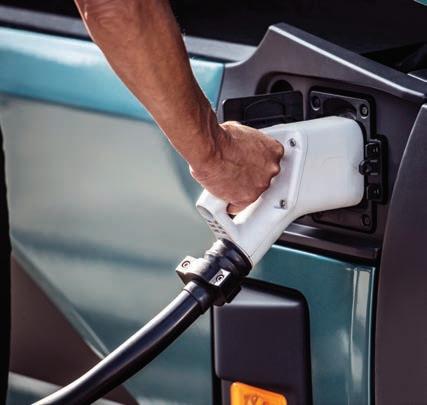
The Traton Group aims to build 1,700 public battery charging stations along European highways
Volvo’s view that e-roads are unnecessary could affect electrification development
Prototype routes have already been built and tested, and more are in development, but the industry’s enthusiasm for e-roads is patchy at best. Lars Edling investigates
Ten years ago electric roads were promoted as a strong candidate for reducing tra c’s carbon emissions. It was just a matter of testing to nd the best technology. Today the situation is di erent. Batteries have taken huge leaps forward and the combination of hydrogen and fuel cells is seen as suitable for long-haulage, heavy tra c. Until fairly recently, people would have laughed at the idea of driving a truck from Carlisle to London on batteries. Batteries would be too expensive and heavy and therefore e-roads were needed, they said. E-roads using either an overhead catenary or inductive coils buried in the Tarmac make it possible to reduce the number of batteries as they can be charged while driving.
Today, batteries still weigh about 20 times more than diesel fuel on an equivalent route, but the crucial difference is that battery prices have dropped radically. As a result, Volvo Trucks no longer believes e-roads are necessary. Instead, the company is investing in battery operation for local and regional transport, while hydrogen and fuel cells are designated as an alternative for heavy vehicles in long-distance traffic. Volvo Trucks’ position may prove to be of great importance for electrification of road transports.
E-roads require large government infrastructure investments at a European level for international road transport to work. All stakeholders must push in the same direction − a united action − which, after Volvo’s statement, will be more difficult to achieve. Other large truck manufacturers such as Scania and Daimler are affected by Volvo’s position, as uncertainty affects the entire automotive industry. As a result, investments in battery charging infrastructure appear to be more attractive, as does refuelling infrastructure for hydrogen. ➜ 24
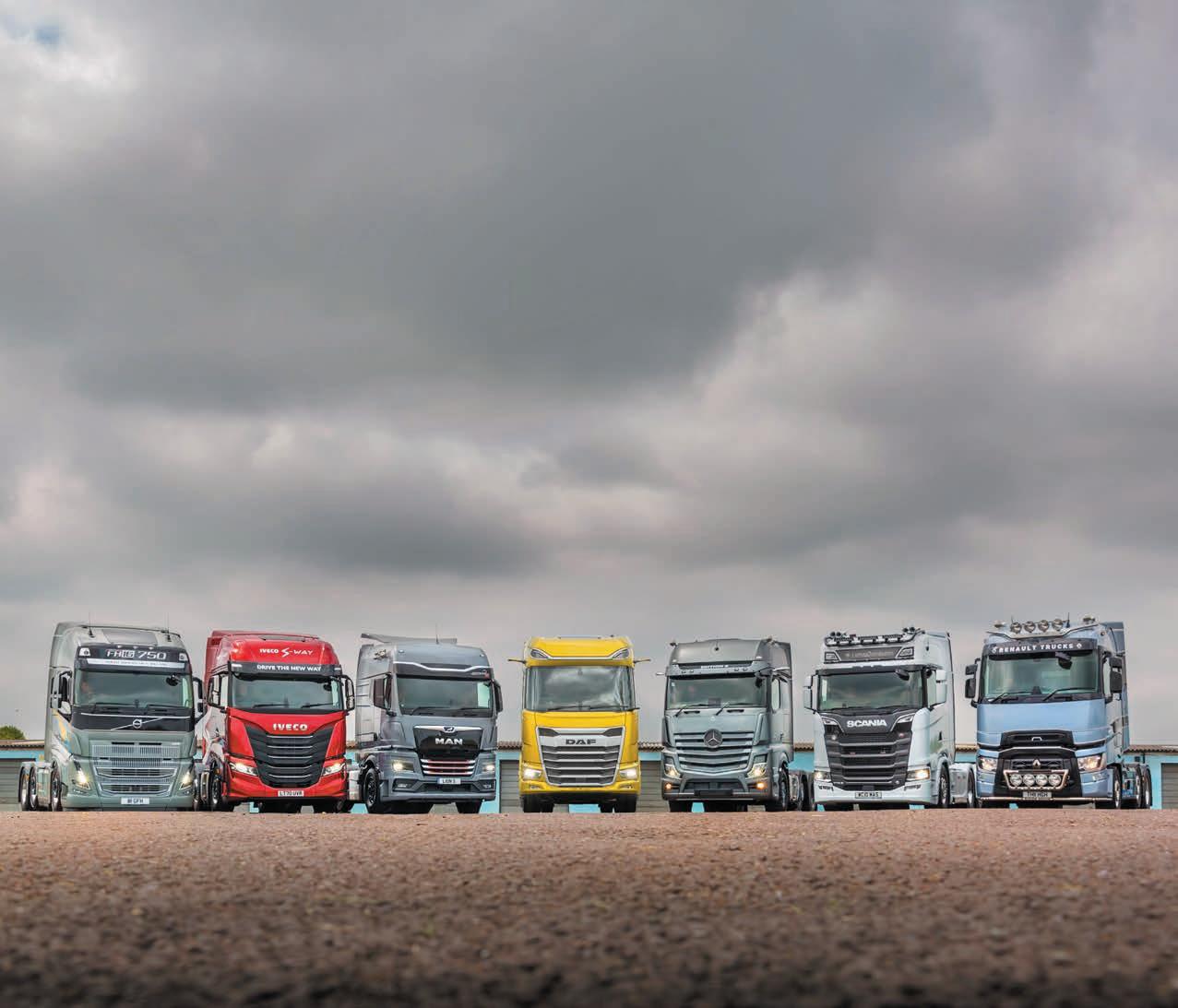


Volvo is investing in battery operation for local transport, and in hydrogen and fuel cells for long-distance transport

Anders Nordelöf says an e-road grid would take decades to build, whereas routes for hydrogen-based transport can be established quickly
Both these options can be built step by step, with many different investors, says Anders Nordelöf, researcher in lifecycle assessment of electromobility at Chalmers University of Technology in Gothenburg, Sweden.
More charging stations
Also, a new direction is noticeable in the Electrification Commission’s action plan commissioned by the Swedish government and published on 28 December 2021. The plan states that Sweden should primarily invest in the expansion of battery charging stations. By 2030, approximately 6,600 charging points will be needed at logistics centres and hubs, and just over 2,100 public charging points. However, the Commission does not want to drop e-roads completely, but now labels them as “a complement to stationary charging”.
Since 2016, the Swedish Transport Administration has tested four different technical solutions for e-roads in demonstration projects. Sweden, together with Germany, has for many years been a world leader in e-road technology development. It has also been decided that Sweden’s first permanent electric road should be constructed on the E20 between Örebro and Hallsberg, a distance of 21km.
Previously, the Swedish Transport Administration was commissioned by the government to prepare a plan for the construction of a 3,000km e-road grid to be completed by 2035. Now the agency recommends caution when it comes to further expansion. The proposal to the
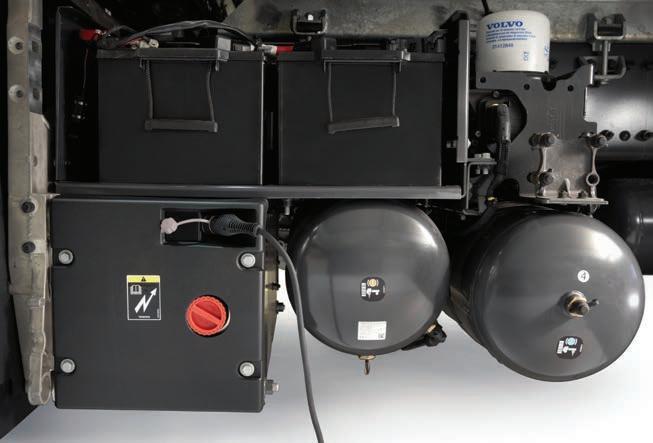
Dan Boman

Scania launched its commercial electric truck range in 2020
government is to build merely 200km to 300km during the years 2026 to 2030.
However, representatives of e-road projects believe electric roads will be necessary in the long run.
Power-up on the move
From the outset it has been clear that while EV traffic still is small, an array of battery charging stations will suffice. But when EV traffic increases and a driver has seven vehicles in front queueing at a charging station, e-roads will be necessary to enable charging while driving. Besides, with e-roads you can start driving even if you haven’t charged at home, says Gunnar Asplund, inventor and R&D manager of the firm providing the technology behind e-roadArlanda. (Also, he is a doyen among Swedish e-road pioneers.)
Asplund adds that increased charging power (e-roadArlanda can provide up to 800kW) means that only shorter stretches of e-roads will be needed in a future grid. Thus, infrastructure investments and the number of battery cells needed will be dramatically reduced for both trucks and cars.
Håkan Sundelin, project manager of SmartRoad Gotland, a wireless e-road system, points to environmental reasons that speak in favour of e-roads. Minimising battery size is of extreme importance. A transport system for all kinds of vehicles based on batteries isn’t sustainable, given the huge mineral consumption and the harmful environmental impact of batteries.
Among truck manufacturers − very influential in the transport electrification game − negotiations are underway. (Proposals must first be approved by concerned EU agencies as they involve co-operation between competitors). ➜ 26




The Traton Group, which includes Scania and MAN, together with Daimler and Volvo Trucks, wants to build 1,700 public battery charging stations along European highways to secure important transport routes for heavy BEV traffic.
Another collaboration in motion is between Volvo Trucks and Daimler to develop technology for hydrogen and fuel cells.
Hydrogen combined with fuel cells can be a useful alternative for long-distance heavy transport. While a European e-road grid would take several decades to build and reach the desired functionality, routes for hydrogenbased transport can be established and thrive regionally, preferably in connection to sources of green hydrogen, Nordelöf says.
Gas burners
As an example, a large amount of hydrogen is formed as a byproduct from chemical industries, a source which often remains unused. Hydrogen can be stored, which makes for flexibility, although storage comes at a cost. For sustainability, hydrogen must emanate from renewable sources. Hydrogen refuelling is quick − advantageous for the driver − but currently in Sweden there are no more than a handful of public fuelling stations for hydrogen. Another drawback of hydrogen fuel cells is loss of efficiency; 20% to 30% of the energy content is lost in conversion from electricity to hydrogen, but research and development is in full swing to reduce this loss.
These three technology options – batteries, e-roads and hydrogen/fuel cells – being considered by the truck industry must all still be labelled as immature. In contrast, our present fossil fuel-based system is extremely mature and most functions in society are designed around oil, petrol, gas or diesel. However, of the three technologies mentioned, batteries are currently subject to the greatest investments and are undergoing the fastest development. Weight is still a problem and puts limits on truck loads. But for short distances that are predictable – for example, city routes − batteries are an excellent solution, says Nordelöf.
Lots of different battery solutions are being tested and scientists are looking for replacements for minerals such as cobalt, lithium and graphite that are environmentally harmful. Congo accounted for nearly two-thirds of global cobalt production in 2020, making it the world’s largest cobalt producer by a large margin. Unfortunately, in Congo cobalt is mined under appalling conditions for mine workers, which makes it of paramount importance to find a substitute. ■
VIEWS FROM THE BIG PLAYERS IN SWEDISH ELECTRIFICATION
Jan Pettersson, programme manager electrification, Swedish Transport Administration
Pettersson argues Sweden should invest primarily in battery charging stations, although he believes e-roads can be of interest as a complement to charging stations. Sweden’s first permanent e-road will be built on the E20 between Örebro and Hallsberg, with the choice of technology to be decided in 2023 and completion in 2025. He recommends caution in the continued expansion of e-roads. The STA’s proposal to government is to build merely 200km to 300km between 2026 and 2030.
Hydrogen and fuel cells as a powertrain for heavy transport should grow as clusters around industries that already produce green hydrogen.
Lars Mårtensson, director environment and innovation manager, Volvo Trucks
Volvo invests in batteries for local and regional transport and in hydrogen and fuel cells for long-haul heavy transport. Volvo does not support e-roads. Instead, the OEM believes that by 2030, 50% of truck sales will be electric vehicles, and fossil-fuel powered trucks will be completely phased out in 2040. The internal combustion engine will remain in the long run, but will be powered by biofuels.
Mårtensson believes most vehicles will be charged at nighttime and en route charging will take place during breaks, loading and unloading. Trucks will have a range of up to 500km.
Volvo’s batteries are manufactured by Samsung SDI, with batteries and minerals recycled.
Emilia Käck, public relations electrification, Scania
Scania invests in electrified drivelines including batteries, e-roads or hydrogen plus fuel cells, but today the focus is mainly on battery electric vehicles. It believes fossil fuels will be phased out by 2040, to be replaced with electricity and renewable fuels, and internal combustion engines remaining in the long run.
Scania predicts stationary battery charging at depots at night, at transhipment centres and public charging stations with a high charging power capacity.
Scania’s battery cells are manufactured by Northvolt and other producers, and batteries and minerals are recycled.
Gunnar Asplund, inventor and R&D manager, Evias, provider of the technology behind eRoadArlanda
Evias developed the conductive system using a rail sunk into the road surface, feeding electricity from below. It can be used by trucks, buses and cars. A 2km demonstration project was tested on a public road between 2017 and 2021, though this has now been dismantled. eRoadArlanda transmitted 200kW to vehicles in all weather conditions and tests showed up to 800kW could be transmitted, which would reduce the length of e-roads needed to one-fifth. This would cut the cost of e-road infrastructure dramatically.
Evias also manufactures a stationary battery charging system using the same technology, and a modified version of the e-road system has been designed for feeding electric mining vehicles from above.
Håkan Sundelin, project manager, SmartRoad Gotland
SmartRoad Gotland is the world’s first wireless e-road for buses and trucks. Electricity is fed from copper coils embedded in rubber segments buried under the asphalt. It allows for an air gap of up to 24cm without any loss of efficiency. It was tested by a 40-tonne electric truck with trailer and in summer time by an airport shuttle.
The demonstration project is running from 2019 to 2022 and an extension is being discussed.
The technology has been developed by Electreon Wireless in Israel and the second-generation system can transfer more than 120kW from road to vehicle, which is enough for both propulsion and charging.
Electreon’s system is being tested in Israel, Germany, Italy, and soon the US.








